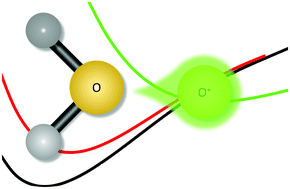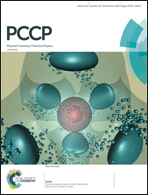Binding of the atomic cations hydrogen through argon to water and hydrogen sulfide†
Abstract
Water and hydrogen sulfide will bind with every atomic cation from the first three rows of the periodic table. While some atoms bind more tightly than others, explicitly correlated coupled cluster theory computations show that energy is required to be put into the system in order to dissociate these bonds even for noble gas atoms. The most promising systems have shallow entrance potential energy surfaces (PESs) that lie above deeper wells of a different spin. These wells are shown explicitly for H2OO+, H2SS+, and H2OS+ where relaxed PESs of the heavy atom bond lengths indicate that quartet states will cross more deeply-bound doublet states allowing for relatively easy association but much more difficult dissociation. In astrophysical regions that are cold and diffuse, such associations could lead to the formation of novel molecules utilizing water (or H2S) as the building blocks of more rich subsequent chemistry. Recent work has hypothesized that oxywater (H2OO) may be an intermediate in the formation of molecular oxygen in comets, and this work supports such a conclusion at least from a molecular cation perspective.



 Please wait while we load your content...
Please wait while we load your content...
